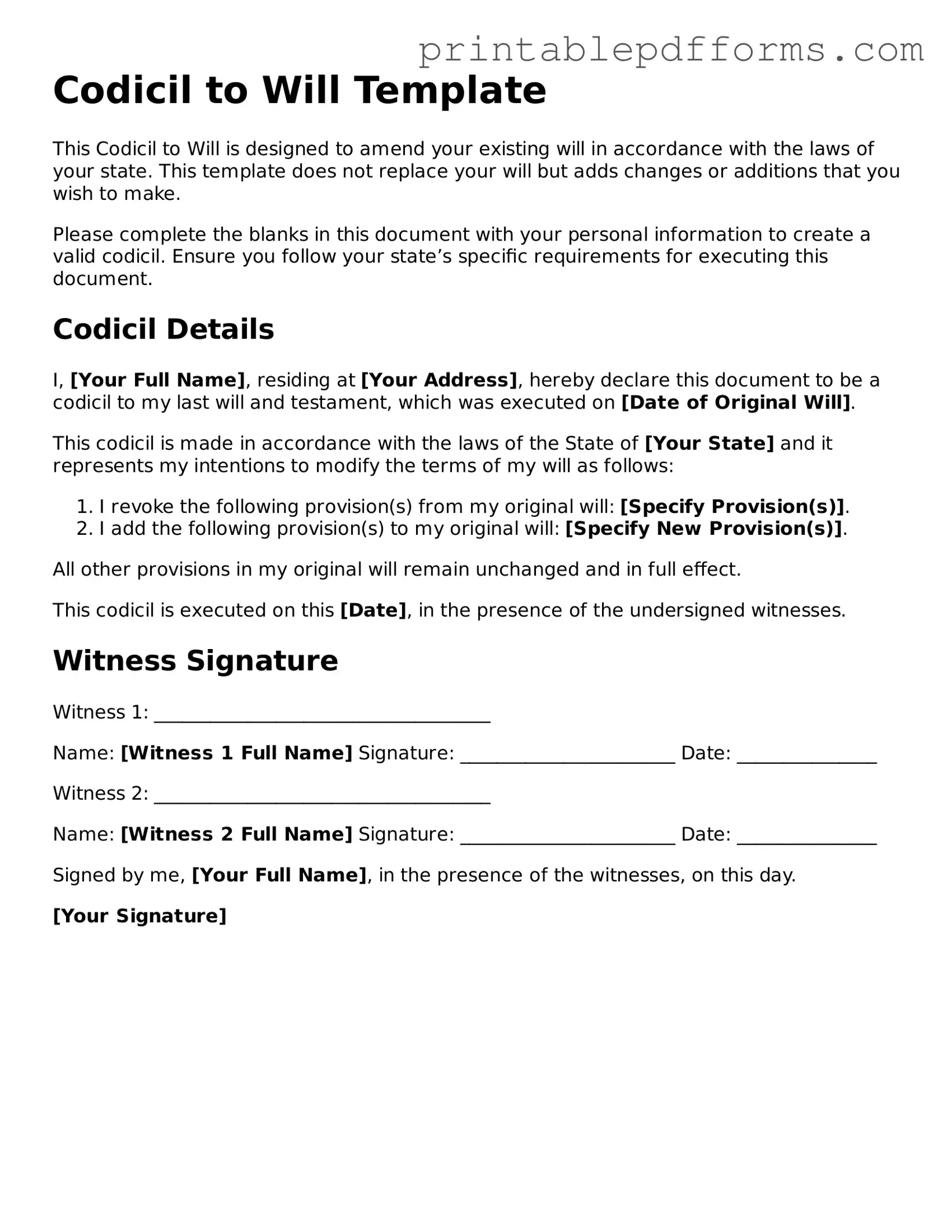Codicil to Will Template
This Codicil to Will is designed to amend your existing will in accordance with the laws of your state. This template does not replace your will but adds changes or additions that you wish to make.
Please complete the blanks in this document with your personal information to create a valid codicil. Ensure you follow your state’s specific requirements for executing this document.
Codicil Details
I, [Your Full Name], residing at [Your Address], hereby declare this document to be a codicil to my last will and testament, which was executed on [Date of Original Will].
This codicil is made in accordance with the laws of the State of [Your State] and it represents my intentions to modify the terms of my will as follows:
- I revoke the following provision(s) from my original will: [Specify Provision(s)].
- I add the following provision(s) to my original will: [Specify New Provision(s)].
All other provisions in my original will remain unchanged and in full effect.
This codicil is executed on this [Date], in the presence of the undersigned witnesses.
Witness Signature
Witness 1: ____________________________________
Name: [Witness 1 Full Name] Signature: _______________________ Date: _______________
Witness 2: ____________________________________
Name: [Witness 2 Full Name] Signature: _______________________ Date: _______________
Signed by me, [Your Full Name], in the presence of the witnesses, on this day.
[Your Signature]
